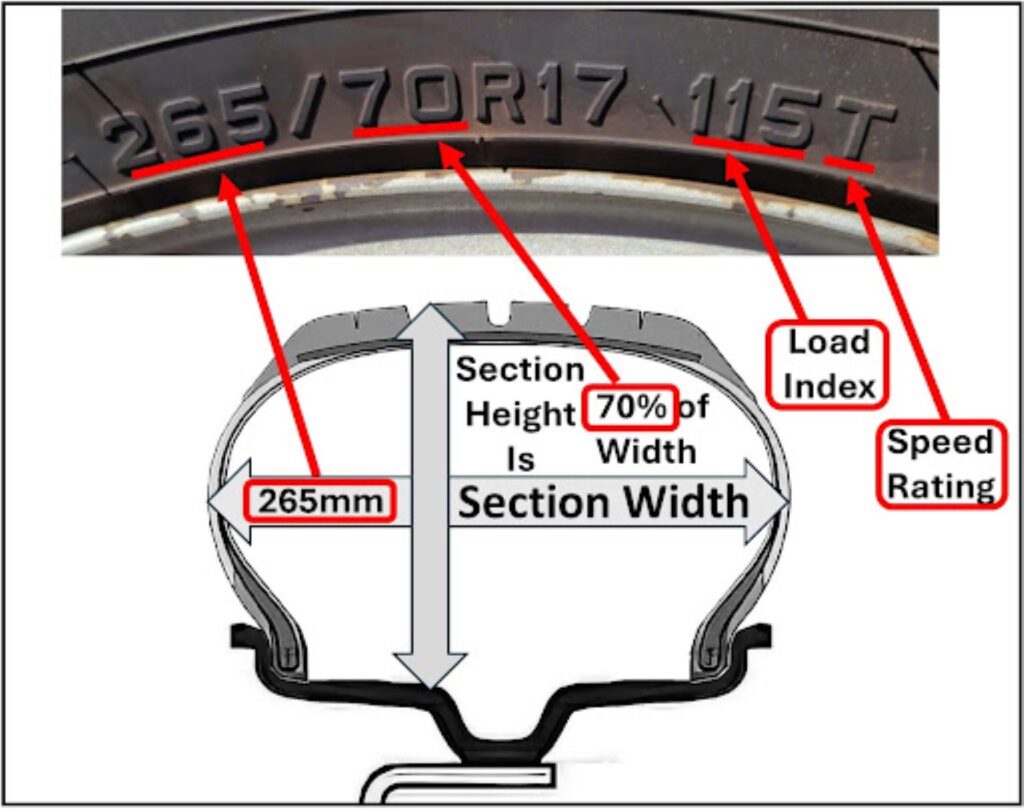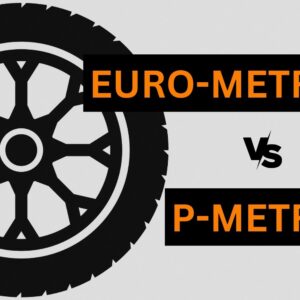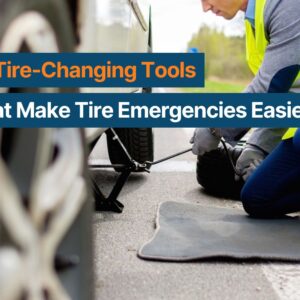Tires are one of the many parts of your vehicle that require frequent replacements, mainly because they’re always coming into contact with the ground.
And if you’re relatively new to driving or owning a vehicle, one of the first things you should familiarize yourself with is the size of your tires.
How Tire Sizes Work
You’ll come across a group of letters and numbers etched on the sidewall of your tires. These figures represent a specific feature on your tires.
For easier representation, let’s use this tire size一P 215 / 65 R 15 89 H.
Tire Type
The letter “P” in our example represents the tire type, which stands for “passenger vehicle tire.” Vehicles that fall under this classification include:
- Cars
- SUVs
- Crossovers
- Electric vehicles
- Small pickup trucks
Other than the passenger vehicle tire classification, tires can also be classified as LT or “light truck tire,” as well as ST or “special trailer.”
LT tires are intended for vehicles that can carry heavy loads, mainly three-quarter or one-ton trucks and SUVs.
Lastly, ST tires are for travel, boat, and utility trailers.
Note: If there’s no letter before the tire width, you probably have a metric tire or European-sized tire.
Tire Width
Going back to our example, the three-digit number following the tire type represents the tire width.
Also referred to as the section width, this figure represents the tire’s side-to-side measurement in millimeters.
Aspect Ratio
The aspect ratio follows the tire width. To avoid confusion, a forward slash separates the two figures.
Aspect ratio refers to the height of the sidewall measured from the rim of the wheel to the top of the tread. Aspect ratio is often expressed as a percentage of tire width.
But if you want to get the tire’s sidewall height in inches, you’ll need to perform a couple of mathematical functions:
- First, convert the tire width from millimeters to inches.
- Next, multiply the figure by 65% or 0.65.
- The figure derived from this equation will represent the sidewall height in inches.

Construction Type
In our example, “R” stands for “radial tires,” which is the industry standard for everyday tires. Radial tires generally have a blend of polyester, steel, and fabric in their plies, which are then coated with rubber.
Radial tires are known for their exceptional road grip, low rolling resistance, ride comfort, and durability.
Tires can also be marked with the letter “D” after the aspect ratio, which stands for diagonal plies.
Diagonal plies or bias-constructed tires have criss-crossed plies usually found in motorcycle and trailer tires.
Wheel Diameter
Wheel diameter refers to the distance between the two bead seat areas measured in inches.
Load Index
The last number you’ll see on your tire represents the load index or the heaviest weight the tire can support when it’s inflated to the maximum air pressure rating.
The tire load index has a corresponding weight capacity expressed in pounds (lbs.).
Speed Rating
A letter from the alphabet would be the last thing you’ll see on your tire, which represents the tire’s speed rating.
The speed rating indicates the safest top speed the tire can travel for a sustained amount of time. A higher speed rating also means that the tire is better equipped for managing heat and provides better control when travelling at high speeds.
In our example, the speed rating is “H.” This rating means that the tire can sustain its performance if the vehicle is traveling at 130 mph.
Tires that are designed for speeds above 149 mph have a “ZR” designation, as well as a letter “Y” enclosed in brackets.
How to Measure Total Tire Height

There are two ways you can measure tire height. You can either compute it manually or simply use a calculator.
When measuring tire height, you need to multiply the tire’s sidewall height by two and add the rim size. Note that the equation to compute the tire’s sidewall is already mentioned in this article.
But if math isn’t your thing and you want to take the easier route, you can hit up the search bar and look for a tire height calculator.
Most tire height calculators will only require you to input details like the tire width, aspect ratio (in percentage), and wheel size.
Can You Change Your Vehicle’s Recommended Tire Size?
While it’s possible to replace your vehicle’s tire size with a modified one, it’s important to remember that a lot of factors will come into play when you do.
Switching to a bigger tire size significantly reduces the gap between the tire and fender, increases your vehicle’s ground clearance, and helps improve overall ride comfort.
On the downside, expect to lose some torque when you switch to a bigger tire size. Your brakes’ stopping power could also be affected negatively due to the bigger size.
If you’re planning to get a different tire size for your vehicle, make sure you’ve done enough research and consult professionals on how to go about the modification to avoid any complications down the road.
Getting the wrong tire specifications can damage your vehicle’s suspension, wheels, and other parts.
Tire width is another factor to consider when replacing your stock tires. Going for wider tires can have a lot of advantages, including increased lateral grip, better braking performance, decreased body roll, and improved aesthetic appeal.
However, wider tires also have their fair share of disadvantages, including increased fuel consumption, reduced turning radius, and increased road noise.
Key Takeaways
You can never go wrong with familiarizing yourself with your tire’s specifications. Doing so ensures that you buy the right set of replacements every time, helping you save time and money.
Like other vehicle upgrades, stock tires can be switched with different specifications for performance and aesthetic reasons.
But before you install a different set of tires in terms of size, make sure you’ve done enough research. Changing tire size can have a significant impact on your vehicle’s suspension and overall performance, so make sure you’re on the right track by consulting professionals.
Get Wheels and Tires for Your Vehicle Today
Whether you’re changing your tire size or simply getting replacement tires, you should always make sure you’re getting the right tires for your vehicle. Getting the wrong tires isn’t only an expensive mistake but a dangerous one too. Driving with the wrong tire size can affect your vehicle’s braking distance, cornering stability, and steering responsiveness. It can also cause damage to your struts and shocks, leading to premature wear. For your own sake, make sure to double-check the tires you’re getting. Luckily, getting the right tire size is fast and easy with CarParts.com.
CarParts.com offers a wide selection of wheel and tire packages of varying sizes for different types of vehicles. To avoid getting the wrong tires, don’t forget to use our built-in vehicle selector. Just input your vehicle’s year, make, and model, and you’ll see all the different tires that are compatible with your ride. The best part is that you don’t have to wait too long for your new set of tires to arrive. If you order by 12 p.m. ET, you can expect your package to arrive in as fast as two business days!
Don’t take any chances when buying a new set of tires. Check out our catalog of high-quality wheel and tire packages at CarParts.com and order the right one for your vehicle today!
Any information provided on this Website is for informational purposes only and is not intended to replace consultation with a professional mechanic. The accuracy and timeliness of the information may change from the time of publication.
































